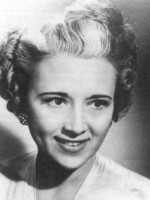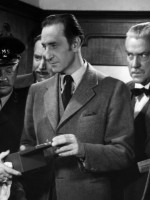Charles Coleman is a Actor born on 21 december 1885
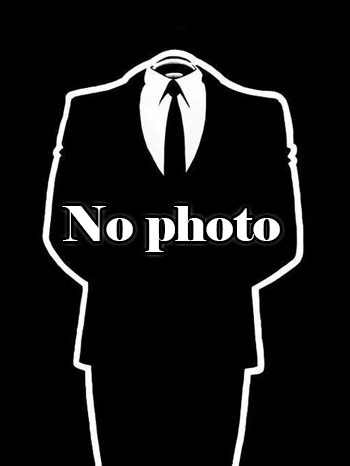
Charles Coleman was an Australian-born American character actor of the silent and sound film eras. He began his film career in the 1915 silent film, The Mummy and the Humming Bird, which was also the screen debut of Charles Cherry, a noted stage actor. In his over 200 performances in films, he would appear in over half of them as either a butler, doorman/concierge, valet, or waiter. The 1930s would see Coleman appear in such notable films as Beyond Victory (1931), starring Bill Boyd and James Gleason, the Wheeler & Woolsey comedy Diplomaniacs (1933), 1934's Born to Be Bad which starred Loretta Young and Cary Grant, the 1934 version of Of Human Bondage starring Bette Davis and Leslie Howard, the first film to star the pairing of Fred Astaire and Ginger Rogers, The Gay Divorcee (1935), the first feature-length film to be shot entirely in Technicolor, Becky Sharp, 1936's Magnificent Obsession starring Irene Dunne and Robert Taylor, the Spencer Tracy vehicle, Captains Courageous (1937), The Prince and the Pauper (1937), starring Errol Flynn and Claude Rains, and the Reginald Owen version of A Christmas Carol (1938).
The 1940s would see Coleman's prolific career continue, including roles in many more notable films. Among these were: Buck Privates (1941), the first film starring the comedy duo of Abbott and Costello; 1943's Du Barry Was a Lady, starring Red Skelton, Lucille Ball, and Gene Kelly; Orson Welles and Joan Fontaine in the 1944 version of Jane Eyre; the 1945 film The Picture of Dorian Gray, with George Sanders, Donna Reed, Angela Lansbury, and Peter Lawford; and the 1949 comedy A Connecticut Yankee in King Arthur's Court, starring Bing Crosby and Rhonda Fleming.
The last film Coleman would work on was the Gene Autry vehicle, The Blazing Sun, which was released in November 1950. Double Dynamite, starring Jane Russell, Groucho Marx, and Frank Sinatra, would be the final film released in which he would appear, which would premiere in New York City on Christmas Day 1951. Coleman had worked on the film in 1948, but it was shelved for several years by Howard Hughes, and not released until after Coleman's death. Coleman died of a stroke on March 8, 1951, and was cremated and interred at Chapel Of The Pines Crematory in Los Angeles.
Source : Wikidata
Charles Coleman

- Infos
- Photos
- Best films
- Family
- Characters
- Awards
Birth name Charles Pearce Coleman
Birth 21 december 1885
Death 8 march 1951 (at 65 years)
Birth 21 december 1885
Death 8 march 1951 (at 65 years)
The 1940s would see Coleman's prolific career continue, including roles in many more notable films. Among these were: Buck Privates (1941), the first film starring the comedy duo of Abbott and Costello; 1943's Du Barry Was a Lady, starring Red Skelton, Lucille Ball, and Gene Kelly; Orson Welles and Joan Fontaine in the 1944 version of Jane Eyre; the 1945 film The Picture of Dorian Gray, with George Sanders, Donna Reed, Angela Lansbury, and Peter Lawford; and the 1949 comedy A Connecticut Yankee in King Arthur's Court, starring Bing Crosby and Rhonda Fleming.
The last film Coleman would work on was the Gene Autry vehicle, The Blazing Sun, which was released in November 1950. Double Dynamite, starring Jane Russell, Groucho Marx, and Frank Sinatra, would be the final film released in which he would appear, which would premiere in New York City on Christmas Day 1951. Coleman had worked on the film in 1948, but it was shelved for several years by Howard Hughes, and not released until after Coleman's death. Coleman died of a stroke on March 8, 1951, and was cremated and interred at Chapel Of The Pines Crematory in Los Angeles.
Usually with
Filmography of Charles Coleman (161 films)
Actor

Double Dynamite (1951)
, 1h20Directed by Irving Cummings
Origin USA
Genres Comedy, Romantic comedy, Adventure, Musical, Romance
Themes Films about music and musicians, Musical films
Actors Jane Russell, Groucho Marx, Frank Sinatra, Don McGuire, Howard Freeman, William Edmunds
Roles le deuxième Père Noël
Rating59%





Johnny Dalton, un caissier de banque pour avoir voulu aider un bookmaker à se sortir d'une situation inextricable se trouve à son tour dans une facheuse situation. Seul son meilleur ami Emile pourra le sortir de cette impasse.

Ma and Pa Kettle Go to Town (1950)
, 1h19Directed by Charles Lamont
Origin USA
Genres Comedy
Actors Marjorie Main, Percy Kilbride, Richard Long, Meg Randall, Charles McGraw, Jim Backus
Roles Charles the Butler (uncredited)
Rating66%





After winning the house-of-the-future Ma and Pa are content. Until they receive a notice stating that they have won a contest from the Bubble-Ola Company, and the prize - a free all-paid trip to New York City. Ma tells Pa that they can't go because they have no one to look out for the kids. Meanwhile, famous bank robber Shotgun Munger crashes and drives into the Kettle Farm. Pa comes along and greets him, after a long conversation Munger tells Pa that he can stay and watch over the kids (he was trying to hide from the police). So, Ma and Pa Kettle go to New York City and get in contact with their daughter-in-law Kim and their son Tom.

My Friend Irma (1949)
, 1h43Directed by George Marshall, Hal Walker, Oscar Rudolph
Origin USA
Genres Comedy, Romance
Actors Dean Martin, Jerry Lewis, Marie Wilson, Diana Lynn, Don DeFore, John Lund
Roles Henry
Rating64%





The storyline follows two women, Irma Peterson (Marie Wilson) and Jane Stacey (Diana Lynn), who room together in New York. Irma is a somewhat dim-witted blonde who deep down has good intentions. Jane is an amibitious woman who dreams of marrying a rich man. She winds up as a secretary for a millionaire, Richard Rhinelander (Don DeFore).
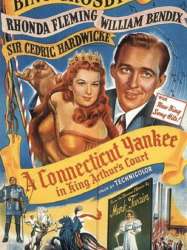 , 1h46
, 1h46Directed by Tay Garnett
Origin USA
Genres Comedy, Fantasy, Musical
Themes Films about magic and magicians, Films about music and musicians, Time travel films, Musical films
Actors Bing Crosby, Rhonda Fleming, Cedric Hardwicke, William Bendix, Henry Wilcoxon, Richard Webb
Roles Richard - Lord Pendragon's Aide (uncredited)
Rating64%





Hank Martin (Bing Crosby), an American mechanic, is knocked out and wakes up in the land of King Arthur. Here he finds romance with Alisande la Carteloise (Rhonda Fleming) and friendship with Sir Sagramore (William Bendix).
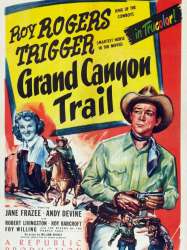
Grand Canyon Trail (1948)
Directed by William Witney
Origin USA
Genres Western
Actors Roy Rogers, Andy Devine, Roy Barcroft, Jane Frazee, James Finlayson, Robert Livingston
Roles J. Malcolm Vanderpool
Rating55%





Sintown n'est qu'une ville fantôme déserte jusqu'à ce que Vanerpool commence à chercher de l'argent. Cookie et les partenaires de Roy ont investi 20 000 $ dans l'entreprise pour constater que la mine est sans valeur et Vanerpool est en faillite. Carol vient chercher de l'argent pour sauver l'entreprise, mais ne sait pas que leur ingénieur, nommé Regan, est tordu et veut tout l'argent pour lui-même. Mais seul Old Ed sait où se trouve le filon mère.

Three Daring Daughters (1948)
, 1h55Directed by Fred M. Wilcox
Origin USA
Genres Musical, Romance
Themes Films about music and musicians, Musical films
Actors Jeanette MacDonald, José Iturbi, Jane Powell, Edward Arnold, Harry Davenport, Ann E. Todd
Roles William (uncredited)
Rating61%





It's Tess' graduation day from "Miss Drakes School for Girls". During the choir's performance at the ceremony, Tess notices that her beautiful, divorcee mother, Louise Rayton Morgan isn't there. Louise, an editor for Modern Design Publication, is lying in Dr. Cannon's office from fainting due to being over-worked and stressed-out. At home after the graduation ceremony, Dr. Cannon has a talk with Louise's three daughters, Tess, Ilka and Alix. He tells them that their mother needs a vacation badly, but the only way she can relax is if she goes without the girls. The girls agree, but Louise is reluctant; however, the girls convince her to go. The girls see their mother off on her one month Cuban cruise. When the girls get home they discuss their mother, and believe if they bring their father back home it will make their mom happy and healthy again. In reality, Louise has kept the truth about their father from them. Their father was actually a very uncaring man, who left them and left Louise to raise the girls on her own. The girls go to see their father's boss, Robert Nelson to locate their father and bring him home. Meanwhile on Louise's Cuban cruise, she meets famed pianist and conductor, Jose Iturbi. Jose is immediately taken by Louise, but she plays hard to get, while having the time of her life. When Louise finally returns home, she has a secret to tell the girls, but, the girls have a secret too.
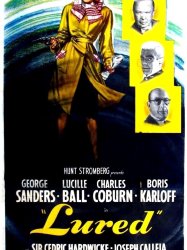
Lured (1947)
, 1h42Directed by Douglas Sirk
Origin USA
Genres Drama, Thriller, Noir, Crime
Themes Serial killer films
Actors George Sanders, Lucille Ball, Charles Coburn, Boris Karloff, Cedric Hardwicke, Joseph Calleia
Roles Sir Charles (uncredited)
Rating69%





Sandra Carpenter (Lucille Ball) is an American who came to London to perform in a show, but now is working as a taxi dancer. She is upset to find out that friend and fellow dancer Lucy Barnard (Tanis Chandler) is missing and believed to be the latest victim of the notorious "Poet Killer," who lures victims with ads in the newspaper's personal columns and sends poems to taunt the police.

The Lone Wolf in London (1947)
, 1h8Directed by Leslie Goodwins
Origin USA
Genres Crime
Actors Gerald Mohr, Eric Blore, Nancy Saunders, Evelyn Ankers, Richard Fraser, Queenie Leonard
Roles Cabby
Rating58%





This script must be run from the command line

Love from a Stranger (1947)
, 1h21Directed by Richard Whorf
Origin USA
Genres Drama, Crime, Romance
Themes Théâtre, Films based on plays
Actors John Hodiak, Sylvia Sidney, Ann Richards, John Howard, Isobel Elsom, Ernest Cossart
Roles Portier de l'hôtel
Rating59%





A woman fears her new husband will kill her.
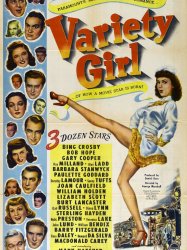
Variety Girl (1947)
, 1h33Directed by George Marshall
Origin USA
Genres Comedy, Musical theatre, Musical
Themes Films about music and musicians, Musical films
Actors Mary Hatcher, Olga San Juan, DeForest Kelley, Frank Ferguson, Bing Crosby, Nella Walker
Roles Man at Steambath (uncredited)
Rating62%






The Pilgrim Lady (1947)
, 1h7Directed by Lesley Selander
Origin USA
Genres Comedy, Romance
Actors Lynne Roberts, Warren Douglas, Alan Mowbray, Veda Ann Borg, Clarence Kolb, Helen Freeman
Roles Noel
Rating59%





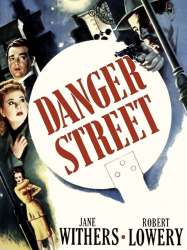
Danger Street (1947)
, 1h8Directed by Lew Landers
Origin USA
Genres Comedy, Crime
Actors Jane Withers, Robert Lowery, Bill Edwards, Elaine Riley, Lyle Talbot, Will Wright
Roles Plumley
Rating55%





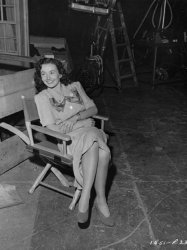
I've Always Loved You (1946)
, 1h57Directed by Frank Borzage
Origin USA
Genres Drama, Romance
Actors Philip Dorn, Catherine McLeod, Maria Ouspenskaïa, Felix Bressart, Elizabeth Patterson, Vanessa Brown
Roles Butler
Rating62%





Leopold Goronoff, lors d'une audition, remarque le talent de Myra Hassman, une jeune pianiste. Il la prend sous sa coupe, et elle devient vite amoureuse de son maître en silence. Très vite, son succès se fait grandissant et porte ombrage à Goronoff. Myra épouse George Sampter, un ami d'enfance, dont elle a une fille. Cette dernière devient, elle aussi, une grande pianiste et doit jouer sous la direction de Goronoff...

Cluny Brown (1946)
, 1h40Directed by Ernst Lubitsch
Origin USA
Genres Drama, Comedy, Romantic comedy, Romance
Themes Children's films
Actors Charles Boyer, Jennifer Jones, Peter Lawford, Richard Haydn, Helen Walker, Reginald Gardiner
Roles le policier Birkins
Rating73%





A plumber's niece (Jennifer Jones) and a refugee (Charles Boyer) meet in England prior to World War II, and Una O'Connor, Peter Lawford, Helen Walker, Reginald Gardiner, C. Aubrey Smith, Reginald Owen, and Richard Haydn are around to take up what slack there is.
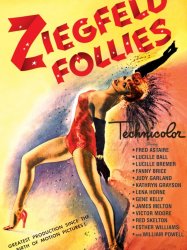
Ziegfeld Follies (1946)
, 1h50Directed by Vincente Minnelli, Norman Taurog, Roy Del Ruth, Robert Lewis, Merrill Pye, George Sidney, Charles Walters
Origin USA
Genres Comedy, Musical theatre, Musical
Themes Dance films, Films about music and musicians, Musical films
Actors Fred Astaire, Lucille Ball, Lucille Bremer, Fanny Brice, Judy Garland, Kathryn Grayson
Roles Le majordome (This Heart of Mine)
Rating63%





Florenz Ziegfeld (William Powell), au paradis, veut faire revivre ses grands spectacles de music-hall. S'ensuit, sortie de son esprit, une série de sketches musicaux ou humoristiques mettant en scène diverses vedettes.
 Connection
Connection

